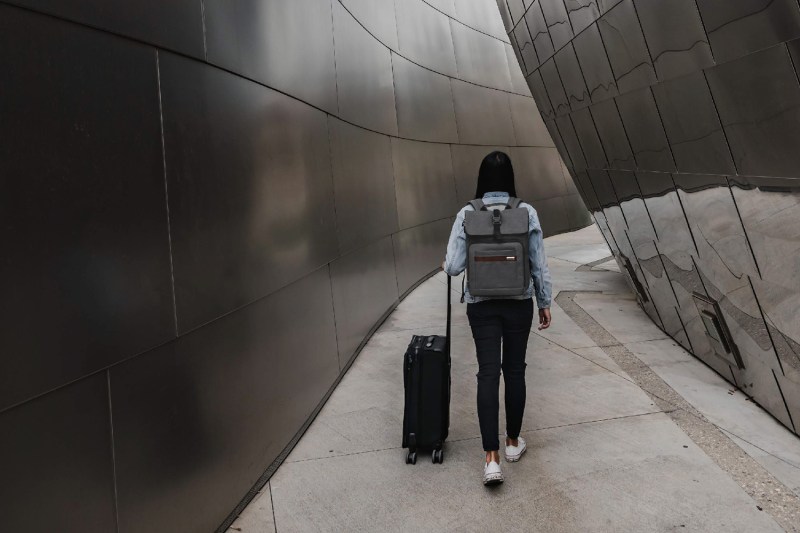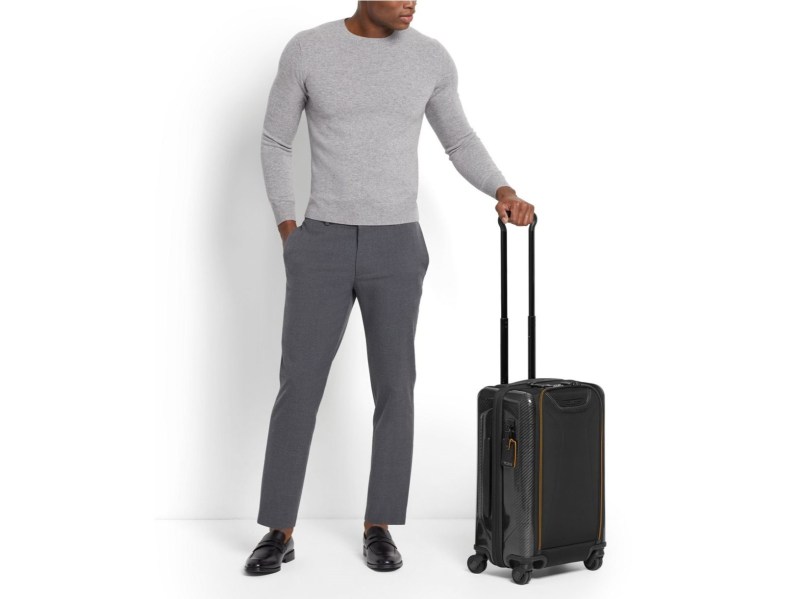
Luggage can be a tough buy. Suitcases are pricey, so unless money is no object, you want to ensure optimal value from any purchase. Yes, you can always go with a cheap option from department stores or the local retailer, but nothing compares to genuine products from some of the hottest luggage brands on the market, like Tumi, Monos, Away, or Briggs & Riley. If you’re here, you’ve undoubtedly narrowed your choices to two brands: Tumi vs Briggs & Riley. But you’ll need a much more thorough comparison to pick one. That’s precisely what we’re here to do. Let’s discuss.
Tumi vs Briggs & Riley luggage: Who wins?

If we have to decide once and for all, we recommend Briggs & Riley because it’s more affordable and they have a much better warranty. However, both luggage brands deliver sleek designs, premium materials, high build quality, and competitive pricing. So, you can’t go wrong with either choice.
Price
In a direct comparison, Tumi and Briggs & Riley are on the high-end or more expensive side of luggage, but as a more granular matchup with the rest of the market, these two brands are much more accessible overall. Compared to Rimowa, which tends to have much higher prices, Tumi and Briggs & Riley are more affordable. Tumi is the more expensive of the two, with Carry-Ons starting at $695 and topping out at $4,500 for its most durable, titanium shell option. Tumi’s Checked luggage ranges from $1,100+ to $1,800, depending on your style and model. Briggs & Riley Carry-ons start at $419 and top out at $779, with Checked luggage ranging from $379 to $1,000+. Prices will vary based on sales, promotions, and when you read this.
Both brands have similar designs, and the color variations are plentiful. But pound-for-pound, it’s tough to argue with that lower price. Not to mention, Briggs & Riley regularly features some great deals and discounts, so you can save even more if you buy at the right time.
Features
Regarding features, Tumi and Briggs & Riley luggage offer remarkably similar experiences. Let’s be clear: either brand offers a highly functional, durable set of luggage with a range of useful support options, like Briggs & Riley’s unique self-repairing zippers.
Here are the standard features you can expect:
- A durable, hard exterior or fabric shell
- An adjustable telescopic handle
- TSA-approved locks
- High-performance wheels
- Interior compression system for storage and organization
Even so, these two brands aren’t clones of one another, and their products still differ slightly. For example, while Briggs & Riley offers durable, polycarbonate shell luggage, they also have a broader selection of tough, fabric-based luggage options. On the other hand, Tumi offers premium luggage made of hard case materials like titanium, which is a bit tougher than the usual polycarbonate. Tumi also has more selective options and styles, built purposefully for the situations, from compact and international carry-ons to short-trip and extended-trip full-size luggage. You can plan accordingly to match your trip with either brand, although Tumi has the better selection of hardshell cases, while Briggs & Riley offers a wider range of traditional formats.
Moreover, while some brands offer limited organization inside, Tumi and Briggs & Riley take it seriously. Inside either, you’ll find compression straps, extra storage flaps, mesh pockets, zippered dividers, and more — like Tumi’s clothes hangers. These two brands should be a top choice for anyone who likes to keep their away gear organized and neat. The comparison in this category is more even-keeled, which should be no surprise.
Build Quality
Both brands take durability and longevity seriously, with Tumi being renowned for its exceptional materials and designs. High-end materials include polycarbonate, titanium, ballistic nylon, aluminum, and other resilient components. As previously mentioned, Briggs & Riley even offers self-repairing zippers in some bags like the . Impact-resistant corner guards, performance-built spinner wheels, a sturdy telescopic handle, and tough straps are also onboard, all things that might be prone to failure in other luggage options, but not here.
You’ll be pleased to know that you’re in good hands whether you go with Tumi or Briggs & Riley.
Design
Tumi luggage designs are minimalistic, sleek, and sophisticated compared to Briggs & Riley’s traditional aesthetics. Both are appealing, it just depends on what you’re looking for in your next luggage set. Moreover, both brands take a thoughtful approach to bag layout and configuration, meaning there’s plenty of organization support in each, from compression straps, dividers, and mesh pockets to expandable designs that allow you to fit more clothing and gear inside.
You can choose your preferred color and style across either brand, although Tumi seems to have more color variation overall. There are also broader options for extra bags, including garment bags and trunk-stowed sets for your road trips.
Warranty
Briggs & Riley offers an “Unconditional” lifetime warranty versus Tumi’s exclusive five-year coverage. As long as you’re the original purchaser of the luggage, you’re covered from cracks or breaks in the shell, the breakage of wheels or handles, broken zippers, and non-functional fabric tears. Tumi doesn’t cover damage from abuse, mistreatment, or cosmetic wear, so you’ll still want to take good care of your bags. However, both brands will cover repair costs for damage caused by normal wear and tear, poor airline handling, or other transit damage, with Tumi offering coverage during your first year of ownership — Briggs & Riley cover it forever. With Briggs & Riley, you can even DIY repairs through exclusive brand repair kits to save time and avoid freight shipping costs.
When comparing the two brands, Briggs & Riley has the better warranty coverage because of its extended and unconditional lifetime coverage. Although, you’d be just fine with Tumi.
It’s time to pack your bags and go on an adventure

Let’s level with one another for a moment. Pitting Tumi vs Briggs & Riley in a direct comparison is a tad silly. They’re both fantastic brands with exceptional products, high-quality materials, great support, and accessible pricing. Although Tumi is more expensive, you wouldn’t have to sacrifice any features or experiences when choosing one brand.
If we have to make the final decision and choose one, we’re going with Briggs & Riley simply because it’s more affordable, and with their lifetime warranty, our bags are covered forever.




